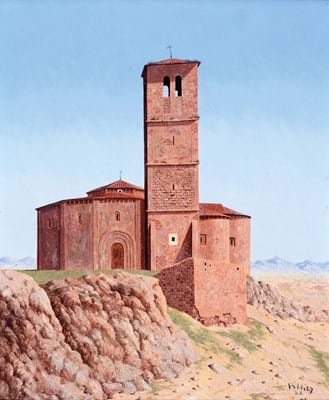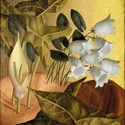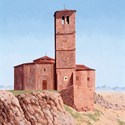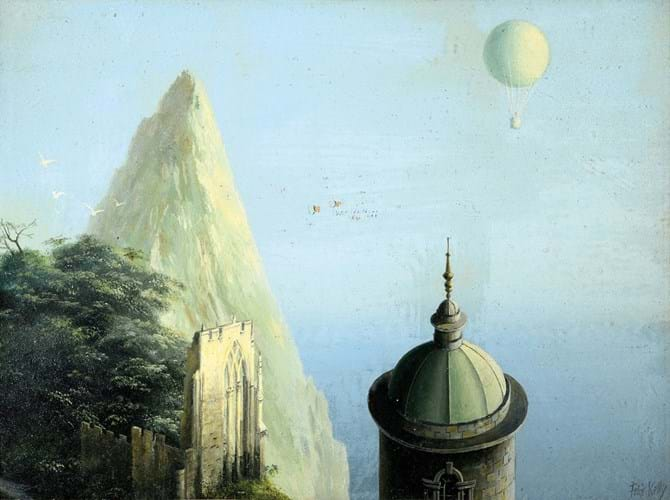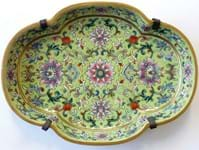Consigned from a Devon vendor, the 15-lot group offered at auction on October 19-20 had been stored in a dilapidated house for half a century.
“The works were certainly what you would call original condition – but more ‘barn-find’ than ‘town-house’ condition,” said Charterhouse director Richard Bromell.
Aided by conservative estimates, Surrealist works by Tristram Hillier, John Armstrong and Fred Kelly, together with art by the German émigré artist Fred Uhlman, helped to rack up a £50,000 total.
Armstrong's meticulous style
Making the largest contribution to the day was Flower Piece, a 21 x 16in (54 x 41cm) tempera flower still-life by John Armstrong (1893-1973).
The artist worked in a style greatly influenced by the Surrealist movement. His meticulous depiction of flowers and leaves, often painted in dreamlike landscapes, are eagerly contested at auction.
At Sotheby’s in 2014, a Second World War work on paper study of a tulip towering above bombed buildings soared to a multi-estimate premium-inclusive record of £74,500.
The still-life at Charterhouse, painted after the war in 1948, was last seen publicly in the Painters’ Progress exhibition at the Whitechapel Gallery in 1950, hanging alongside works by Duncan Grant, Ivon Hitchens and John Piper.
With an enticing £1000-2000 guide, it sold for £21,000 to a buyer bidding via one of 13 phones on the lot.
Dream-like canvases
Another established name included in the group was the British Surrealist painter Tristram Hillier (1905-83). Hillier, who was impressed by the paintings of the Surrealists Giorgio de Chirico and Max Ernst, painted dream-like canvases, often characterised by empty, lonely spaces.
The painting at Charterhouse depicts the Iglesia de los Templarios, a church in Segovia near Madrid traditionally thought to have been built by the Knights Templar in the 13th century. The building stands eerily deserted, painted against a vibrant blue sky.
Hillier would have visited the site on one of his numerous post-war trips to Spain. The 12 x 10in (30 x 24cm) oil on board, dated to 1962, was acquired from the London art gallery, Arthur Tooth & Son. It was pursued to £4200, against a £600- 1000 estimate.
Less known is the work of Felix Kelly (1914-94), a versatile New Zealand-born artist whose Surrealist pictures often depict architecture among sinister or strange landscapes.
Two works by the artist featured recently in the Vivien Leigh sale at Sotheby’s in September, including a 1954 commission of the artist’s Chelsea home, Durham Cottage, which the actress shared with Laurence Olivier.
Both works were pursued above their guides to sell for £10,000 and £7500 including premium.
A pair of Kelly’s works at Charterhouse were also keenly contested, well beyond their enticing guides. The smaller of the two was an undated landscape with a mountain, ruins and a hot air balloon in a light blue sky. It bore a label for the influential post-war art dealer, Arthur Jeffress. Despite some damage to the 11½ x 15in (29 x 39cm) oil on board, it was pursued to £3200 against a £150-250 estimate.
The other 16½ x 21½in (42 x 55cm) oil on board of a city square with deck chairs on the lawn and a pair of nuns – a common motif in Kelly’s work – sold for £3400 against a £300-500 estimate.
The buyer was an Australian collector, who made the lengthy trip to Dorset to secure them.



